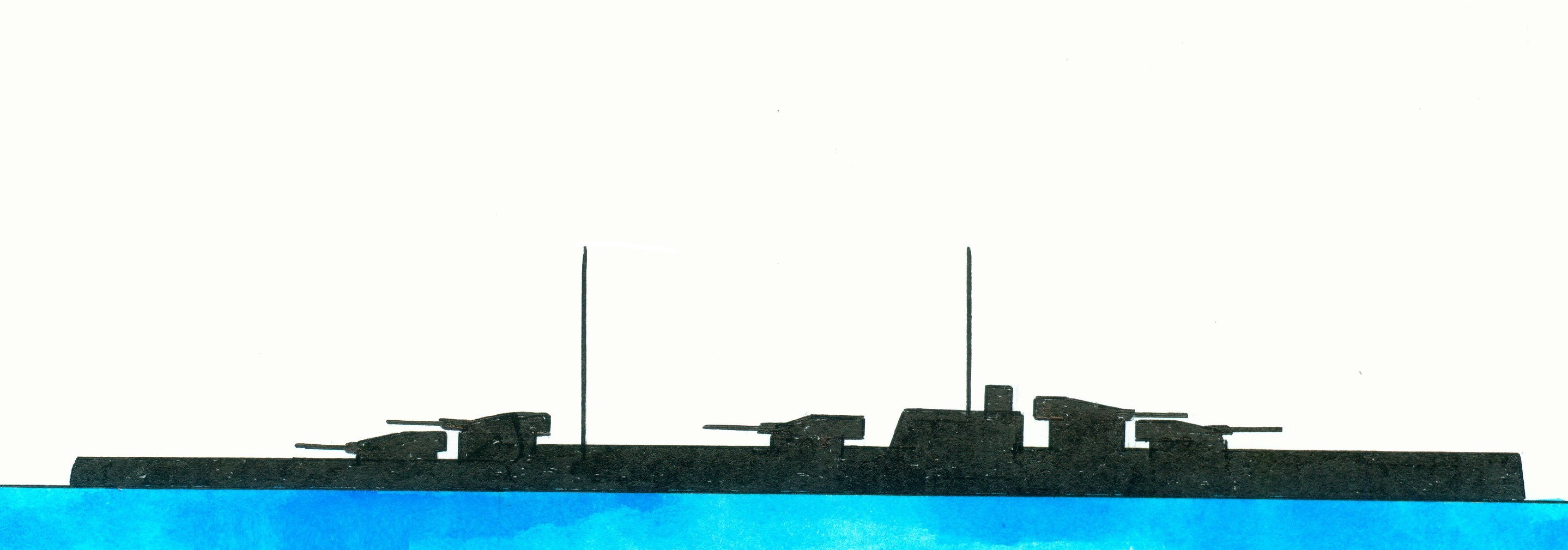Kaiser-class
König-class
The former German Strassburg as the Italian Taranto
An item dated Berlin, Germany 7th reported that the newest German battleships Kaiser (1) and König (2) accompanied by the cruiser Strassburg (3) intended to make a voyage towards West Africa and South America to show the German flag. Some Germans were against while two of the best ships were temporarily not available for service in the home waters. Other Germans thought that this voyage was an example of improved relations between England and Germany.
Notes
1. Of the Kaiser-class consisting of the Kaiser, Friedrich der Grosse, Kaiserin, Prinzregent Luitpold and König Albert. Succeeded by the Helgoland-class and succeeded by the König-class. Building ordered as the Ersatz Hildebrand, laid down at the Imperial Dockyard at Kiel, Germany with yard number 35 in September 1909, launched on 22 March 1911, completed end July 1912, commissioned on 1 August 1912, sea trials 1 August-7 December 1912 and scuttled by her own crew at Scapa Flow, Orkney Isles, Scotland on 21 June 1919. Salvaged in 1929 and her breaking up at Rosyth started in a year later. Building costs 44.997.000 Mark
2. Part of the König-class consisting of the König, Grosser Kurfürst, Markgraf and Kronprinz. Preceded by the Kaiser-class and succeeded by the Bayern-class. Building ordered as the “S”, laid down at the Kaiserliche Werft, Wilhelmshaven, Germany with yard number 33 in October 1911, launched on 1 March 1913, commissioned on 9 August 1914, sea trials completed on 23 November 1914 and scuttled by her own crew at Gutter Sound, Scapa Flow, Orkney Isles, Scotland on 21 June 1919. Never raised. Building costs 45 million Goldmarks.
3. Of the Magdeburg-class, consisting of the Magdeburg, Breslau, Stralsund and Strassburg, preceded by the Kolberg-class and succeeded by the Karlsruhe-class. Laid down under the temporarily name Ersatz Condor at the Imperial navy yard, Kiel, Germany in 1910, launched on 24 August 1911, commissioned on 9 October 1912, stricken on 10 March 1920, handed over to Italy at Cherbourg, France under the provisional name “O” in 1920, renamed Taranto, rebuilt to be used in the Italian colonies in 1936-1937, scuttled at La Spezia, Italy on 9 September 1943, salvaged by German forces, sunk by Allied bombers on 23 October 1943, again salvaged by German forces and for the second time sunk in the outer roads of La Spezia by Allied bombers on 23 September 1944 and finally broken up in 1946-1947.



